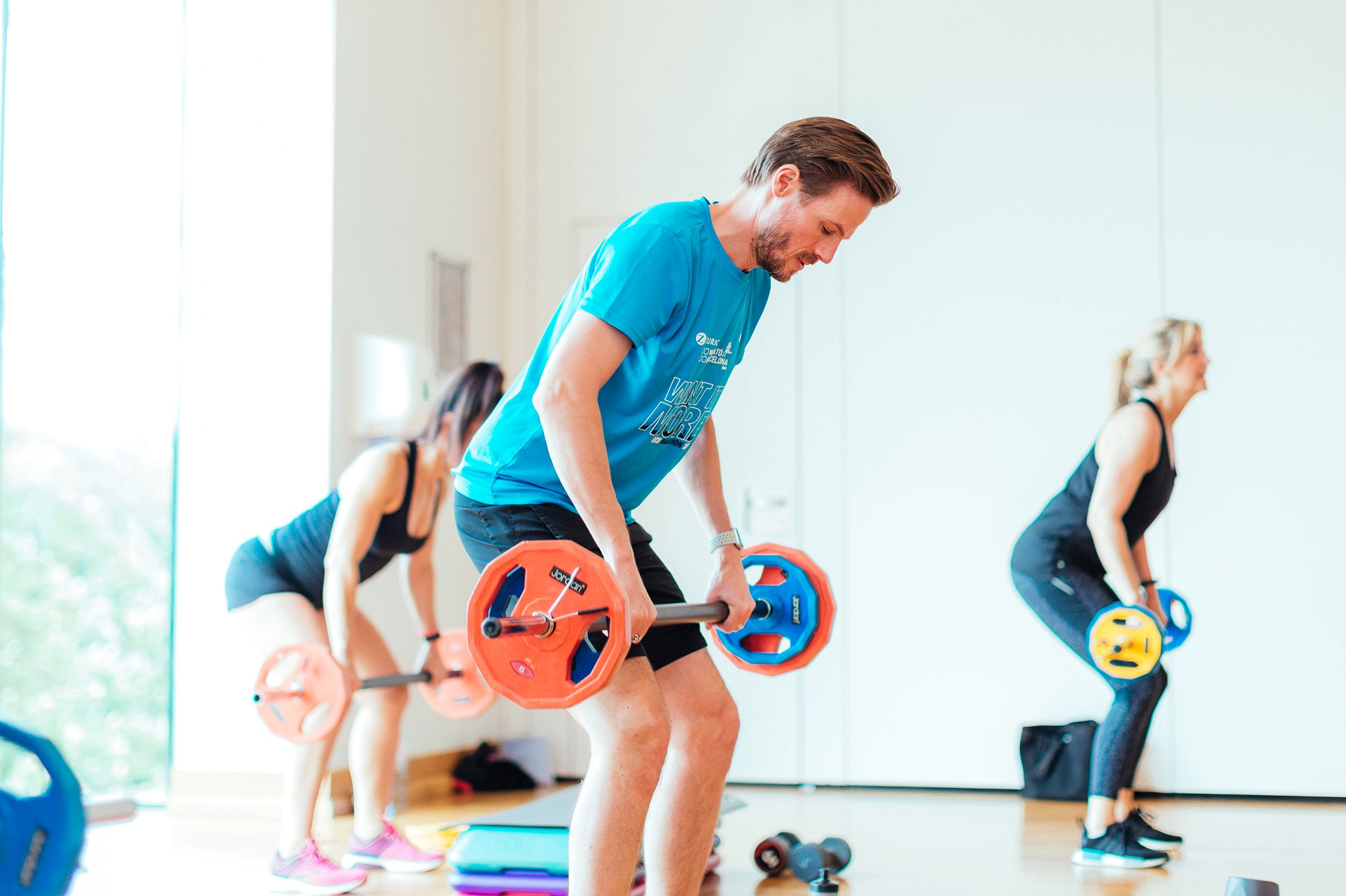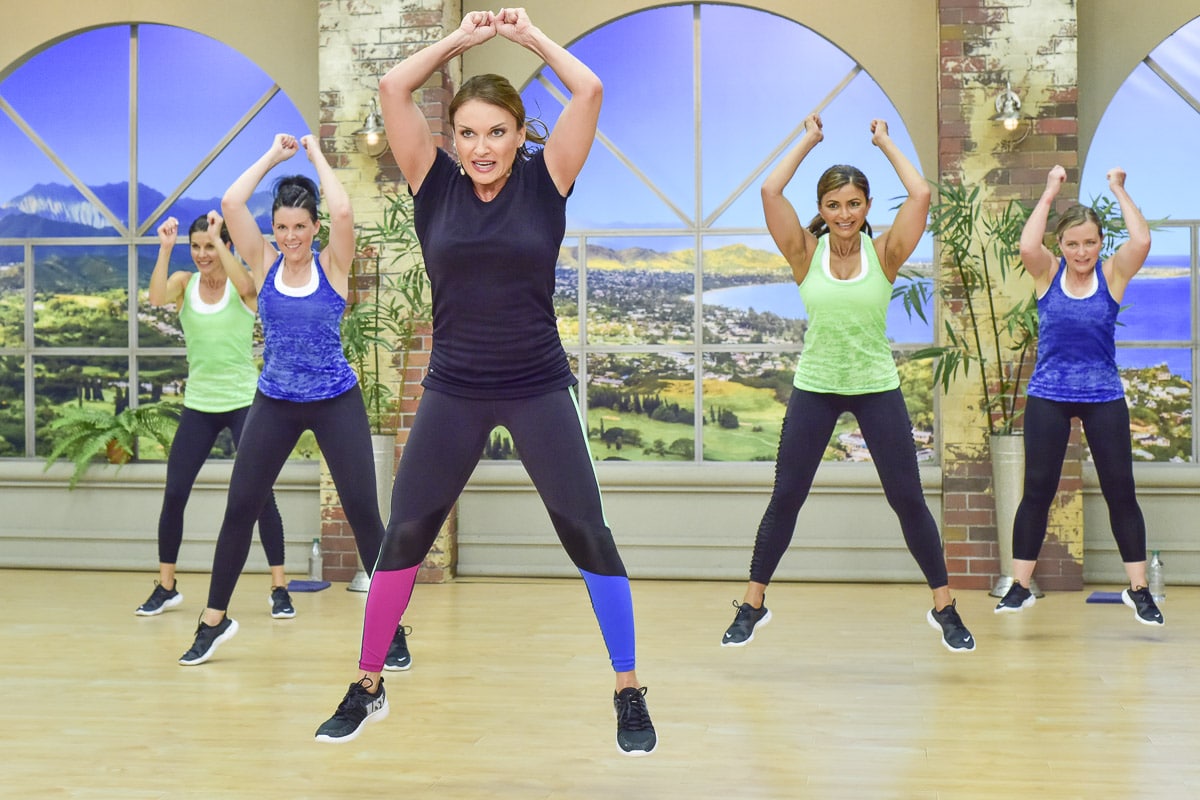

Featured
What Is A Cardiovascular Exercise
Published: September 30, 2023
Discover the benefits of Featured Cardiovascular Exercises and how they can improve your overall health and fitness. Start your journey towards a stronger heart and body today.
Introduction
When it comes to maintaining a healthy lifestyle, including regular exercise in your routine is crucial. One form of exercise that is highly recommended for overall fitness and well-being is cardiovascular exercise. Also known as cardio or aerobic exercise, this type of workout focuses on increasing your heart rate and breathing rate to improve the performance of your cardiovascular system.
Cardiovascular exercise offers a wide range of benefits, from improving heart health and boosting metabolism to increasing endurance and reducing the risk of chronic diseases. Whether you’re a fitness enthusiast or new to exercise, incorporating cardio workouts into your routine can make a significant difference in your overall health.
In this article, we will delve deeper into the world of cardiovascular exercise, exploring its definition, benefits, different types, guidelines for effective workouts, and the differences between cardiovascular exercise and strength training. Additionally, we will discuss common mistakes to avoid to ensure that you get the most out of your cardio workouts.
So, if you’re ready to take your fitness journey to the next level and maximize the benefits of cardiovascular exercise, let’s dive in and discover all you need to know!
Definition of Cardiovascular Exercise
Cardiovascular exercise refers to any physical activity that increases your heart rate and breathing rate, thereby stimulating the cardiovascular system and improving its efficiency. It is also known as cardiovascular endurance exercise, aerobic exercise, or simply cardio.
During cardiovascular exercise, your heart pumps oxygenated blood to the working muscles more efficiently, allowing them to perform optimally. This increased blood flow not only improves the delivery of oxygen and nutrients to the muscles but also enhances the removal of waste products, such as carbon dioxide.
Cardio workouts typically involve repetitive, rhythmic movements that engage large muscle groups in the body. These exercises can be low-impact, such as walking or cycling, or high-impact, such as running or jumping rope. The intensity of cardiovascular exercise can be modified based on your fitness level, making it suitable for people of all ages and abilities.
It is important to note that cardiovascular exercise is distinguished from strength training exercises, which focus on building muscular strength and endurance. While strength training is important for overall fitness, cardiovascular exercise specifically targets the cardiovascular system, enhancing heart and lung function, stamina, and overall endurance.
By engaging in regular cardiovascular exercise, you not only improve your physical fitness but also boost your mental well-being. The release of endorphins during cardio workouts helps reduce stress, anxiety, and depression, promoting a positive mood and increasing overall mental clarity.
In summary, cardiovascular exercise is a form of physical activity that increases heart rate and breathing rate, improving the performance of the cardiovascular system. It is a key component of a well-rounded fitness routine and offers a multitude of benefits for both physical and mental health.
Benefits of Cardiovascular Exercise
Cardiovascular exercise offers a wide range of benefits for your overall health and well-being. Let’s explore some of the key advantages of incorporating cardio workouts into your routine:
- Improves Heart Health: Regular cardiovascular exercise strengthens your heart muscle, making it more efficient at pumping blood. This can help lower your risk of heart disease, high blood pressure, and stroke.
- Increases Endurance: By consistently challenging your cardiovascular system, you can improve your stamina and endurance. This allows you to engage in physical activities for longer periods without feeling fatigued.
- Boosts Metabolism: Cardiovascular exercise increases your metabolic rate, helping you burn more calories even at rest. This can aid in weight management and contribute to overall body fat reduction.
- Enhances Lung Function: Regular cardio workouts improve lung capacity, enabling your lungs to efficiently take in oxygen and remove carbon dioxide. This leads to better overall respiratory health.
- Reduces the Risk of Chronic Diseases: Engaging in cardiovascular exercise regularly can lower your risk of developing chronic conditions such as type 2 diabetes, certain cancers, and metabolic syndrome.
- Improves Mood and Mental Well-being: Cardio workouts release endorphins, commonly known as “feel-good” hormones, which can alleviate stress, anxiety, and depression. This improves your overall mood and promotes mental clarity.
- Strengthens Immune System: Regular physical activity, including cardiovascular exercise, strengthens your immune system, making you less susceptible to common illnesses like the flu or cold.
- Improves Sleep Quality: Incorporating cardio workouts into your routine can promote better sleep patterns, helping you fall asleep faster and enjoy a deeper and more restful sleep.
These are just a few of the numerous benefits that cardiovascular exercise can provide. Whether you’re looking to maintain a healthy weight, boost your mood, or improve your overall fitness level, incorporating cardio workouts into your routine is a smart choice.
Types of Cardiovascular Exercise
Cardiovascular exercise encompasses a wide variety of activities that can be tailored to suit your preferences, fitness level, and available resources. Here are some popular types of cardiovascular exercise:
- Running/Jogging: Running or jogging is a versatile and effective cardiovascular exercise that requires minimal equipment. It can be done outdoors or on a treadmill, allowing you to adjust the intensity and distance based on your fitness level.
- Cycling: Whether you prefer biking outdoors or using a stationary bike indoors, cycling is a fantastic cardio workout that targets the lower body muscles. It is low-impact and can be adjusted to different intensities to suit your needs.
- Swimming: Swimming is a total body workout that is gentle on the joints. It engages multiple muscle groups and provides an excellent cardiovascular workout. It is particularly beneficial for individuals with joint issues or injuries.
- Walking: Walking is a simple yet effective form of cardiovascular exercise that can be easily incorporated into your daily routine. Brisk walking for at least 30 minutes a day can offer significant health benefits and is suitable for people of all fitness levels.
- Jumping Rope: Jumping rope is a fun and challenging form of cardio exercise that can be done virtually anywhere. It improves coordination, endurance, and cardiovascular fitness. Start with shorter intervals and gradually increase the duration as you build stamina.
- Dancing: Dancing is not only a great way to have fun, but it also provides an excellent cardiovascular workout. From Zumba to hip-hop, dancing can elevate your heart rate, improve coordination, and boost your mood.
- Aerobic Classes: Joining a group fitness class that focuses on aerobic exercises, such as step aerobics, kickboxing, or cardio dance, can add variety to your workouts and keep you motivated.
- HIIT (High-Intensity Interval Training): HIIT involves alternating between bursts of high-intensity exercise and short periods of rest. It is a time-efficient way to improve cardiovascular fitness and burn calories.
Remember to choose activities that you enjoy, as this will increase adherence to your exercise routine. Mixing different types of cardio exercises can add variety and prevent boredom. It’s important to consult with a healthcare professional or certified fitness trainer to determine the type and intensity of cardiovascular exercise that is suitable for your individual needs and goals.
Guidelines for Cardiovascular Exercise
To get the most out of your cardiovascular exercise routine and ensure a safe and effective workout, it’s important to follow some guidelines. Here are some key factors to consider:
1. Start Slowly:
If you’re new to cardiovascular exercise or returning after a break, start slowly and gradually increase the duration and intensity of your workouts. This allows your body to adapt and reduces the risk of injury or overexertion.
2. Warm Up and Cool Down:
Always begin your cardio workouts with a proper warm-up to prepare your muscles and cardiovascular system for exercise. A warm-up can include light cardio exercises and dynamic stretching. Similarly, cool down with gentle exercises and static stretching to help your body recover and prevent muscle soreness.
3. Monitor Your Heart Rate:
Monitoring your heart rate during exercise can help you gauge the intensity level of your cardio workout. Aim for a target heart rate zone that corresponds to your fitness goals and age. This can be determined with the help of a heart rate monitor or by manually checking your pulse.
4. Incorporate Interval Training:
Interval training involves alternating between periods of higher intensity and lower intensity during your cardio workouts. This can help boost calorie burn, improve cardiovascular fitness, and prevent plateaus in your progress.
5. Stay Hydrated:
Proper hydration is essential during cardiovascular exercise to maintain optimal performance and prevent dehydration. Drink water before, during, and after your workout, especially if exercising in hot or humid conditions.
6. Use Proper Form:
Whether you’re running, cycling, or performing any other cardio exercise, using proper form is crucial for injury prevention and maximum benefit. Maintain good posture, engage your core muscles, and ensure smooth and controlled movements.
7. Choose Appropriate Footwear:
Wearing proper footwear is essential to support your feet and minimize the risk of injury. Invest in a pair of athletic shoes that provide cushioning, stability, and a good fit for your specific activity.
8. Listen to Your Body:
Pay attention to any signs of pain, dizziness, or extreme fatigue during your cardio workouts. It’s important to listen to your body and modify or stop the exercise if necessary. Pushing through discomfort may lead to injuries or other health complications.
By following these guidelines, you can ensure that your cardiovascular exercise routine is safe, effective, and enjoyable. Remember, consistency is key! Aim for at least 150 minutes of moderate-intensity cardio exercise or 75 minutes of vigorous-intensity exercise per week for optimal health benefits.
Cardiovascular Exercise vs. Strength Training
When it comes to designing an effective fitness routine, it’s important to strike a balance between cardiovascular exercise and strength training. While both types of workouts offer unique benefits, understanding the differences between them can help you optimize your fitness goals.
Cardiovascular Exercise:
Cardiovascular exercise primarily focuses on improving cardiovascular endurance and overall aerobic fitness. It involves activities that increase your heart rate and breathing rate, such as running, cycling, or swimming. Cardio workouts primarily target the cardiovascular system, strengthening the heart and lungs, improving circulation, and boosting overall endurance.
The benefits of cardiovascular exercise include improved heart health, increased calorie burn, enhanced lung function, and reduced risk of chronic diseases. It is particularly effective for weight management, improving mood, and boosting energy levels. Cardio workouts are generally performed for longer durations at a moderate intensity or shorter durations at high intensity, depending on fitness goals and preferences.
Strength Training:
Strength training, also known as resistance training or weight lifting, focuses on building muscular strength, endurance, and overall power. It involves exercises that target specific muscle groups using resistance, such as dumbbells, weight machines, or bodyweight exercises. Strength training not only helps increase muscle mass and strength but also improves bone density, joint stability, and overall body composition.
The benefits of strength training include increased muscle tone, improved metabolism, enhanced athletic performance, and reduced risk of injury. It is particularly effective for building lean body mass, improving postural alignment, and boosting overall strength. Strength training workouts typically involve shorter durations with higher intensity and focus on specific muscle groups or movements.
The Synergy:
Combining both cardiovascular exercise and strength training in your fitness routine can yield synergistic effects. While cardiovascular exercise helps improve overall endurance and cardiovascular health, strength training helps build stronger muscles and bones, enhances metabolism, and tones the body.
Furthermore, strength training can complement cardiovascular exercise by improving running or cycling performance, increasing power and speed, and preventing injuries by strengthening the supporting muscles. On the other hand, cardiovascular exercise can complement strength training by boosting calorie burn, improving recovery between sets, and enhancing overall cardiovascular health.
To optimize your fitness routine, aim for a balanced approach that incorporates both cardiovascular exercise and strength training. This can be achieved by scheduling workouts that alternate between cardio and strength training days or by including hybrid workouts that combine elements of both. Consulting with a fitness professional can help you design a personalized routine that aligns with your goals and abilities.
Common Mistakes to Avoid in Cardiovascular Exercise
While cardiovascular exercise offers numerous benefits, it’s important to avoid certain common mistakes that can hinder your progress and potentially lead to injuries. By being aware of these mistakes, you can optimize your workouts and make the most out of your cardiovascular exercise routine. Here are some common pitfalls to avoid:
1. Doing Too Much Too Soon:
A common mistake is pushing yourself too hard or attempting too much too soon. It’s important to gradually increase the duration and intensity of your cardio workouts to give your body time to adapt. Starting with manageable levels and progressively challenging yourself will help prevent burnout and reduce the risk of overuse injuries.
2. Skipping Warm-up and Cool-down:
Skipping your warm-up and cool-down can increase the risk of injury and result in muscle stiffness. Make sure to properly warm up your body before jumping into a high-intensity cardio workout. Similarly, cool down afterward with gentle exercises and stretching to gradually lower your heart rate and ease your muscles back to a relaxed state.
3. Incorrect Form:
Using incorrect form during cardio exercises can lead to ineffective workouts or even injuries. Whether you’re running, cycling, or performing other exercises, pay attention to your posture and technique. Engage your core, maintain proper alignment, and use appropriate movement patterns to get the most out of your workouts and reduce the risk of strain or accidents.
4. Excessive Impact:
High-impact exercises, such as running or jumping, can be hard on the joints, especially when performed excessively or without proper form. Be mindful of your body’s limits and vary your workouts to include low-impact options, like swimming or cycling, to minimize stress on your joints and avoid overuse injuries.
5. Neglecting Variety:
Repeating the same cardio exercises day after day can lead to boredom and a plateau in your progress. It’s important to incorporate variety into your workouts to keep them engaging and effective. Try different types of cardio exercises, alternate between high- and low-intensity workouts, or participate in group fitness classes to challenge your body in different ways.
6. Overlooking Rest and Recovery:
Rest and recovery are just as important as the exercise itself. Giving your body time to recover is crucial for avoiding burnout and allowing your muscles to repair and rebuild. Incorporate rest days into your weekly routine and prioritize quality sleep to support your cardiovascular fitness and overall well-being.
7. Neglecting Nutrition and Hydration:
Proper nutrition and hydration are vital for fueling your workouts and optimizing your performance. Make sure to eat a balanced diet that includes carbohydrates, protein, and healthy fats to provide ample energy for your cardio workouts. Additionally, stay hydrated before, during, and after exercise to maintain optimal performance and avoid dehydration.
By avoiding these common mistakes, you can ensure that your cardiovascular exercise routine is effective, enjoyable, and safe. Listen to your body, make gradual progress, and consult with a fitness professional if needed to tailor your workouts to your specific goals and needs.
Conclusion
Implementing cardiovascular exercise into your fitness routine is a powerful way to improve your overall health and well-being. By engaging in activities that increase your heart rate and breathing rate, you can strengthen your cardiovascular system, boost your endurance, and enhance your mental and physical fitness levels.
Throughout this article, we have explored the definition of cardiovascular exercise, its benefits, various types, guidelines for effective workouts, and the importance of balancing it with strength training. We have also discussed common mistakes to avoid to ensure a safe and productive cardio routine.
Remember, cardiovascular exercise is not a one-size-fits-all approach. It is essential to adjust the intensity, duration, and type of workouts to suit your personal preferences and fitness goals. Whether you prefer running, cycling, swimming, or dancing, finding activities that you enjoy will increase your likelihood of sticking to your routine and reaping the benefits.
Incorporating both cardiovascular exercise and strength training can provide a comprehensive approach to fitness, addressing both your cardiovascular health and muscular strength. Strive for balance and variety in your workouts to maximize results and prevent plateaus.
Lastly, listen to your body and make adjustments as needed. If you experience pain or discomfort during exercise, consult a healthcare professional or certified trainer for guidance. They can help tailor a program that aligns with your abilities and goals, ensuring a safe and effective cardiovascular exercise routine.
So, lace up your shoes, grab your water bottle, and get ready to elevate your heart rate and improve your fitness. Embrace cardiovascular exercise as a lifelong habit, and reap the numerous physical, mental, and overall well-being benefits that it holds.









